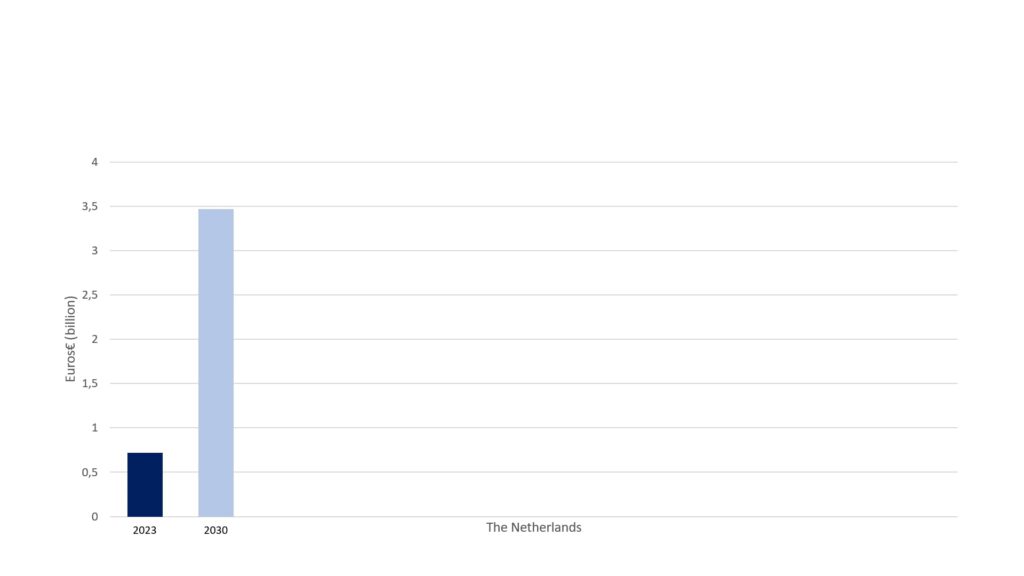MILDA LOTFI & DOMINIQUE VANDE LANGERIJT
Unlocking the potential: generative AI in finance and risk management
The financial industry has not escaped the buzz around recent innovations that will revolutionize the way it operates. In recent years, generative artificial intelligence (Gen AI) has emerged as a transformative force, with solutions such as ChatGPT and Google Bard. This changing landscape offers a wide range of applications in finance and risk management. However, CFOs and CROs have to look further than the buzz to gain understanding of the possibilities and implications that shape the future of Gen AI. This article sheds a light on the development, risks, use cases, and the future of Gen AI within finance and risk.
Defining the playing field
Generative AI is a subset of artificial intelligence that focuses on generating new content, such as text, images or data. Unlike traditional AI, which typically involves supervised learning and making predictions based on historical data, generative AI leverages deep learning techniques. Deep learning with neural networks plays a central role in generative AI within the finance domain, with the goal to create new, human-like content through e.g. recurrent neural networks (RNN) and generative adversarial networks (GAN). These technologies are the driving force behind the creation of sophisticated models that can analyze and report financial data and simulate market scenarios.


Opportunities in risk management
Gen AI vendors are currently positioned within different areas of the financial value chain. The presence of Gen AI within the field of risk management has increased sharply. Its ability to generate data and simulate scenarios can be particularly valuable in assessing and mitigating risks. Therefore, the prevalence of use cases entails stress testing, where Gen AI creates synthetic stress test scenarios that simulate extreme market conditions, economic downturns, or other adverse events. When applied to risk modelling, Gen AI can assist in building refined risk models through enhanced PD, LGD and EAD modelling, as the models are better calibrated. Adding to that, Gen AI is capable of generating synthetic financial data that includes various risk factors and dependencies. These datasets can be used to train and test risk models, allowing for a better understanding of the underlying risks in financial instruments or portfolios. More Gen AI possibilities present themselves within the regulatory requirements field with the prevalence of AI-enabled platforms that actively track regulatory updates. This allows companies to dynamically monitor changes to business-relevant laws, identify emerging risks and fines, and set up controls to ensure legal requirements are being met. Through the automation of tasks that take firms months to accomplish manually, these regulatory AI tools enable businesses to better allocate resources towards regulatory compliance efforts with improved results.
Opportunities in finance and reporting
Moreover, Gen AI is applied when it comes to financial estimation and planning. After training the model on historical financial data, it is able examine balance sheets, income statements, and cash flow statements. Through this, it can identify patterns and trends, to ultimately make predictions on future financial outcomes. Moreover, generative AI offers possibilities for automated report generation, including financial information as well as natural language narratives.
Risks and challenges
As with every new technology, Gen AI doesn’t come without risks. Depending on the use case, these risks can be divided into input risks and output risks. Amplified and new risks associated with their model input are shown in Figure 1, whereas the output risks are shown in Figure 2.
Moving away from risk management into ESG reporting, the risk of greenwashing within generated content can be added as an output risk. Moreover, one of the risks posed by Gen AI the severe risk of hallucination, which is the generation of false content by the model. Hallucination can occur through data bias, overfitting and high model complexity.
| Input risk | Specification |
| Data quality | Using inaccurate or inappropriate user content for retraining purposes. |
| Legal risk | Copyright and other intellectual property issues. |
| Transparency | Data traceability, disclosure of how data is used, stored and who has access to the sensitive data. |
| Privacy | Disclosing sensitive information as part of prompt. |
| Robustness | Vulnerabilities to the attacks via perturbing the data or prompt sent to the trained model. |
Figure 1. Input risks of generative AI
| Output risk | Specification |
| Fairness | Bias in generated output. |
| Legal risk | Copyright infringement. |
| Reliability | Hallucination – false content generation. |
| Reputational risk | Creation of misleading information: generation of toxic, offensive or aggressive content. |
| Privacy | Exposing personal information or sensitive information in generated content. |
| Explainability | Challenges in explaining why output was generated. |
Figure 2. Output risks of generative AI
Requirements for Gen AI implementation
Finance leaders should not only hone their own Gen AI skills, they should provide the environment to their employees to develop their skills. The implementation of Gen AI within the finance spectrum requires several points of attention.
First, assuring the data quality and quantity. Access to diverse and representative datasets is crucial for training generative AI models. The data should reflect the complexity and variability of financial markets, customer behaviors and economic conditions.
Secondly, another key factor is clean data. High-quality and well-labeled data is essential for training accurate and reliable generative models. Data preprocessing is crucial to remove noise and inconsistencies.
Lastly, another great significance of value is adherence to regulatory compliance. It is imperative to ensure that generative AI implementation complies with financial regulations and data protection laws.
All this with the ultimate goal of providing a knowledge baseline from where Gen AI can be applied in the financial institution. Finance professionals need to develop new generative AI fluency on different aspects, e.g. engineering data prompts and validating generated output. Moreover, in order to prevent getting lost in the rising offer of Gen AI use cases, leaders should focus on two or three use cases and start experimenting with these. These use cases should be picked based on value creation potential and scalability as well as their fit with the ambition of the organization.
The future of Gen AI in finance
The age of generative AI is here, and it is evolving at an unprecedented pace. It currently excels at creating text and is becoming better at analyzing numbers quickly. Finance executives need to keep a close eye on how AI is developing, obtain practical experience, and strengthen their organization’s skills. Human accountability will become increasingly critical, a human layer of validation and a final sign-off on every transaction or report generation will be key. Considering the relatively low barriers to entry, adoption can begin without waiting for more developments. The organization must set clear rules and guidelines to the use of Gen AI, CFOs and CROs must welcome this technology, tearing down any barriers impacting its implementation inside their divisions, and encourage their staff to use generative AI throughout the finance and risk function, within the boundaries of their Gen AI framework.
Want to know how we can help you with Generative AI implementation? We like to talk about our business and how we can help you! Get in touch
Want to know more?
We like to talk about our business and how we can help you!
